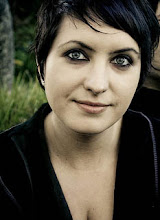Alastair Orr - director of The Unforgiving
The Unforgiving is more than just a horror. It’s South Africa’s first splatter film. Like Saw, it focuses on graphic portrayals of gore and violence, and pardon the pun, is unforgiving of its graphic content. Writer and director Alastair Orr from Pro Cut Productions makes his debut with the film. “As a filmmaker you can only make what you enjoy and then hope that other people enjoy it too. I really love this genre. It allows you to work with minimal cast and crew and tons of blood,” he says. The film opens through Indi-genous Films on 13 August 2010.
“The Unforgiving is a relentless investigation of suffering, murder and corruption told from a variety of points of view,” says Helen Kuun, CEO of Indi-genous Film Distribution. “It’s an exciting foray into a genre that is new for local filmmakers, but one that is hugely popular with audiences all over the world.” She uses Saw as an example, which was made for $1.2 million, but grossed over $100 million worldwide. Similarly Hostel cost less than $5 million to produce and grossed over $80 million.
The Unforgiving tells the story of two survivors, played by Ryan Macquet and Claire Opperman, who are the only links authorities have to a spate of attacks committed by one of the most grotesque serial killers imaginable in rural South Africa.
Ryan had the dual role of lead actor and producer of the film. When they left AFDA, he and Alastair worked together on a 22-minute pilot episode of a television series called Dante. The show was never sold but it did leave the pair with a thirst for independent filmmaking. He and Ryan came up with the idea of the film in 2008 and Alastair developed the script in two months. He pitched it to producer Lorika Boshoff from Illusionz Unlimited Entertainment, who loved it.
Alastair says he grew sick of people complaining about the state of the South African film industry. “I got tired of being told by industry players that we couldn’t make a film because we were too young. So I took all my naivety and ambitions and put them on the page, and what came out was my fear. That’s what interested me, the fear I have as an average, young South African.”
The Unforgiving was shot over eight weekends from March 2009 to the first week of June 2009. “The big advantage of shooting over weekends was that we could edit during the week. This way we were constantly able to monitor our progress and re-shoot if necessary. The script evolved as things on set changed,” says Alastair. He describes his skeleton crew as “various HODs and a couple of film school assistants who wanted to learn how to make films in the real world and not the way they’re taught to.”
The shoot itself was organised chaos. “I loved the spontaneity of the way we filmed. Guerrilla style. We didn’t have money so we made it work. It evolved in front of us into something none of us could ever have imagined. All your planning can go out the window when there’s a thunderstorm and you’re shooting outside. When the sun is setting and the storyboard says you’ve got ten shots but you’ve only got time for two. That’s the part I loved. We made it work,” he says.
The team chose the location of Voslorus in the East Rand. “It’s a place where there are all these abandoned farms. It just really looks like the place where this kind of thing could happen,” reflects Alastair. The director is adamant that there is no social commentary in the film. “It’s pure entertainment, but a percentage of the profits will go to a rape and trauma support initiative.”
The Unforgiving was shot on the HVX200, a P2 camera from Panasonic, which gave the film its characteristic grainy feel. “The DVCPRO HD Codec is so robust that it could handle the way I put multiple grades on the footage without breaking up. We also shot with a 1/1000 of a shutter to amplify the frenzied state of the characters. The film looks and feels very different to what other South African films look and feel like and that’s really because of Craig Maarschalk, our DOP. He shot the thing like a madman, chaining the camera up, smacking it, covering it in blood - the camera really is another character in the film.”
Splatter films portray images society considers shocking, a combination of graphic violence and sexually suggestive imagery. There is also an emphasis on visuals, style and technique, including hyperactive camera work. Alastair is very aware that his film is uncomfortable to watch. “It’s reality, but it’s heightened. Everything’s more extreme, more intense, harsher than the real world. When you look at the film you must never think that you want to be there with these people. This isn’t James Bond,” he says.
But despite the fact that squeamish audiences might not like it, Alastair is proud of his first film. “There are a few things to bear in mind: It’s my first film; I completed it when I was 24; I have worked with some of the best companies in the industry like Waterfront Post and Indi-genous Film Distribution; and it has a theatrical release. Whether the film works or not, I’ve achieved what I set out to do.”
This article first appeared in The Callsheet Newspaper



0 Comments:
Post a Comment
Subscribe to Post Comments [Atom]
<< Home